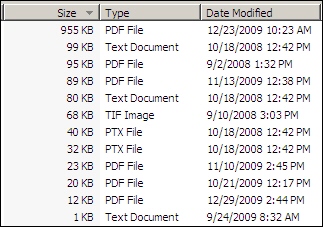Autodesk, Inc. v. Dassault Systemes Solidworks Corp., 2009 WL 5218009 (N.D. Cal. December 31, 2009)
One of the issues in the case of Autodesk, Inc. v. Dassault Systemes Solidworks was whether Autodesk could claim trademark rights and the letters “DWG”. The .dwg (“drawing”) file extension is the native file format for Autodesk’s flagship product AutoCAD.

Plaintiff Autodesk moved for summary judgment on the trademark issue. The defendant pointed out that the trademark laws do not permit one to claim exclusive rights in trademarks that are merely functional.
During the hearing on the motion, the court asked Autodesk’s counsel to disavow any claim to trademark protection for the letters “DWG” when used for the file extension. Counsel did disavow such claim but held onto Autodesk’s argument that the letters could serve as a word mark to be used on packaging and advertising and marketing materials.
The Court agreed and sided with Autodesk and included in its order language that expressly stated “anyone in the world is free to use .dwg as a file extension as far as Autodesk is concerned.”
Autodesk filed a motion and asked the court to reconsider its holding, arguing that what Autodesk really meant when it disavowed the claim of exclusive rights was that anyone else could use the extension so long as the use was being made with Autodesk’s proprietary technology, or was interoperable with that technology.
The court rejected this argument holding:
File extensions are functional, and functional uses cannot be trademarked. To rule otherwise would invite a clog on commerce, given the millions of software applications. The limited universe of extension permutations would soon be encumbered with claimants and squatters purporting to own exclusive rights to file extensions.
The court went on to say there would be no consumer confusion because,
[T]he primary purpose of a file extension is to tell the computer the type of the file it is handling. A computer is not a consumer. Its “reading” of the file extension is not in connection with a commercial transaction. It doesn’t care who made the file format it is trying to read.
This isn’t the first time the question of whether machine perception of information has been held to not give rise to trademark protection. An analogous situation is the 1-800 Contacts v. WhenU decision in which the Second Circuit held that WhenU did not “use” another company’s trademarks within the meaning of the Lanham Act when it included trademarked terms in an unpublished directory that triggered delivery of contextually relevant advertising.

January 28, 2010
Shouldn’t this be fairly intuitive already?
January 28, 2010
Hey Evan, is 1800 Contacts really analogous? That case is about what constitutes “use” of what is undoubtedly trademarked, as opposed to trademarkability.
February 7, 2010
Although not a trademark issue, two or more companies using exactly the same file extension can be problematic at best and tragic at worst. Microsoft for decades has been trying to curate a registry (if you will) of file extensions used in programs across the world in just so that there would be no confusion. There are programs (particularly from German and Polish programmers, no on knows exactly why) that do use the same file extension, programs that have no similarity to each other. IOW, .DWG of one company tha makes drawings for architectural uses and another that calculates weights and measures – completely different companies for sure, but the latter German company could care less about what Microsoft is trying to avoid (in the curating of these extensions).
The irony here is; PCs and MACs allow the use of file extensions so that .dwg, .DWG, Dwg, dWg, dwG, etc (you get the idea?) are ALL DIFFERENT EXTENSIONS TO THE OS! Problem solved? Can we go home now? Share and share “alike”?